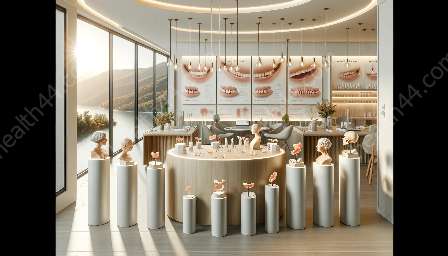Implant-supported dentures provide a stable and natural-looking solution for patients who need to replace missing teeth. However, over time, the fit of the denture may change, leading to discomfort and reduced functionality. Denture relining techniques can address these issues, but it is essential to consider various factors to ensure a successful reline of implant-supported dentures.
When considering a reline for implant-supported dentures, several key factors need to be taken into account, including the type of denture, the condition of the implants, the patient's oral health, and the relining technique to be used. Understanding these considerations is crucial for achieving optimal outcomes and patient satisfaction.
Denture Reline Techniques
Denture relining is the process of resurfacing the tissue-bearing surface of a denture to improve its fit and comfort. There are two primary techniques for relining dentures: direct chairside relining and indirect laboratory relining.
Direct Chairside Relining
This technique involves adding a new layer of resin material to the tissue surface of the denture while the patient is in the dental chair. The process typically takes place during a single dental visit, allowing for immediate adjustments to the fit of the denture. Direct chairside relining is suitable for minor adjustments and temporary solutions.
Indirect Laboratory Relining
Indirect relining involves sending the denture to a dental laboratory, where a new tissue surface is created and processed to fit the denture accurately. This technique provides a more precise and long-lasting result compared to chairside relining, as the manufacturing process in the laboratory allows for meticulous adjustments and high-quality materials.
Considerations for Reline of Implant-supported Dentures
Type of Denture
The type of denture used for implant support plays a significant role in the relining process. Whether it is a bar-retained, ball-retained, or fixed implant-supported denture, the design and attachment system will impact the relining approach. Understanding the specific characteristics of each type of denture is essential for determining the most suitable relining technique.
Condition of the Implants
Prior to initiating the relining process, the condition of the implants supporting the denture must be thoroughly evaluated. Any signs of instability, bone loss, or inflammation around the implants should be addressed before proceeding with the reline procedure. Ensuring the stability and health of the implants is crucial for the long-term success of the relined denture.
Patient's Oral Health
The overall oral health of the patient, including the condition of the soft tissues and supporting structures, is an important consideration for the reline of implant-supported dentures. Any existing oral pathology, such as mucosal inflammation or denture-induced tissue hyperplasia, should be treated before relining the denture to create a healthy foundation for the new fit.
Reline Technique
Choosing the appropriate relining technique is paramount in achieving a successful outcome. For implant-supported dentures, the choice between direct chairside relining and indirect laboratory relining will depend on the specific needs of the patient, the condition of the denture, and the desired longevity of the reline. Collaborating with a prosthodontist or dental technician can help in selecting the most suitable technique.
Conclusion
Considerations for the reline of implant-supported dentures encompass a comprehensive assessment of the denture type, implant condition, patient's oral health, and the choice of relining technique. By carefully addressing these factors, dental professionals can ensure that the relining process results in an optimally fitting and functional denture, ultimately enhancing the patient's overall satisfaction and quality of life.


